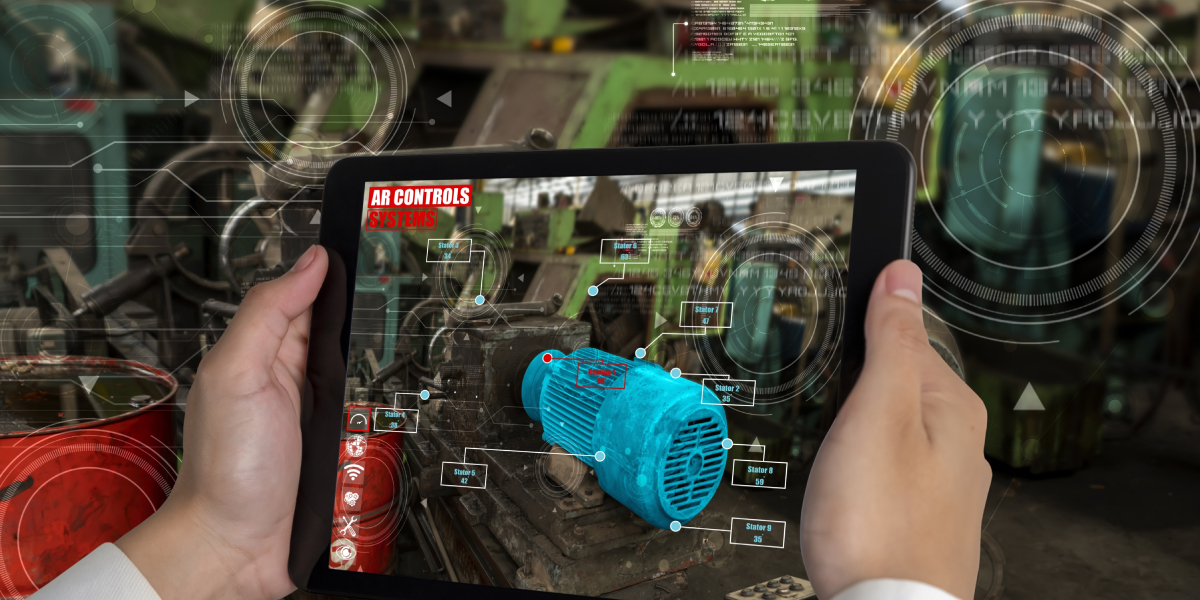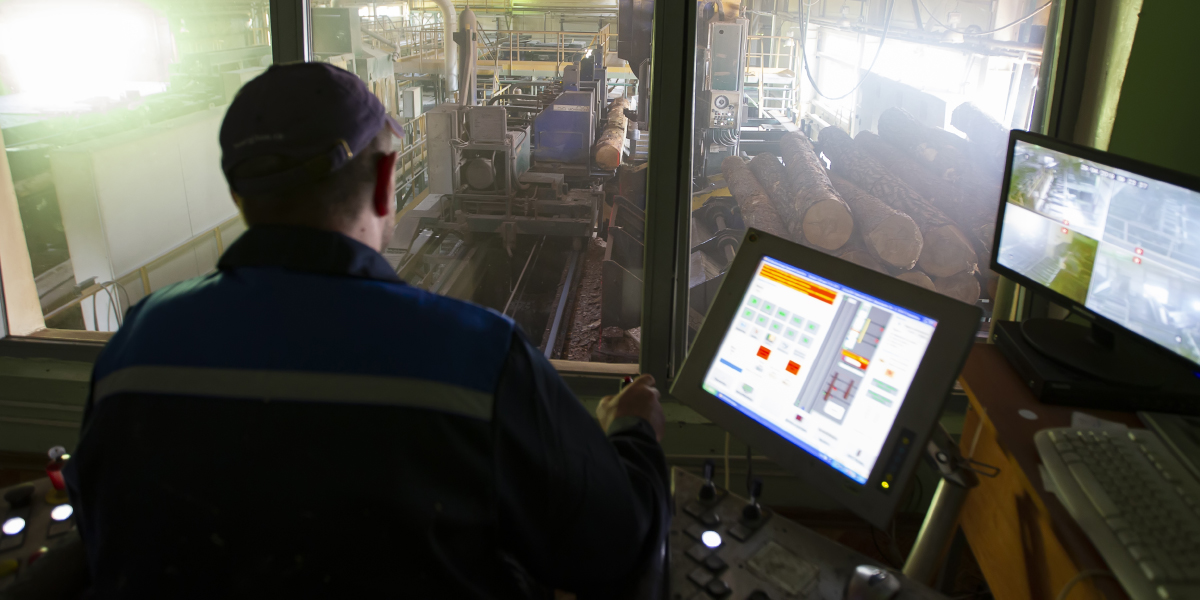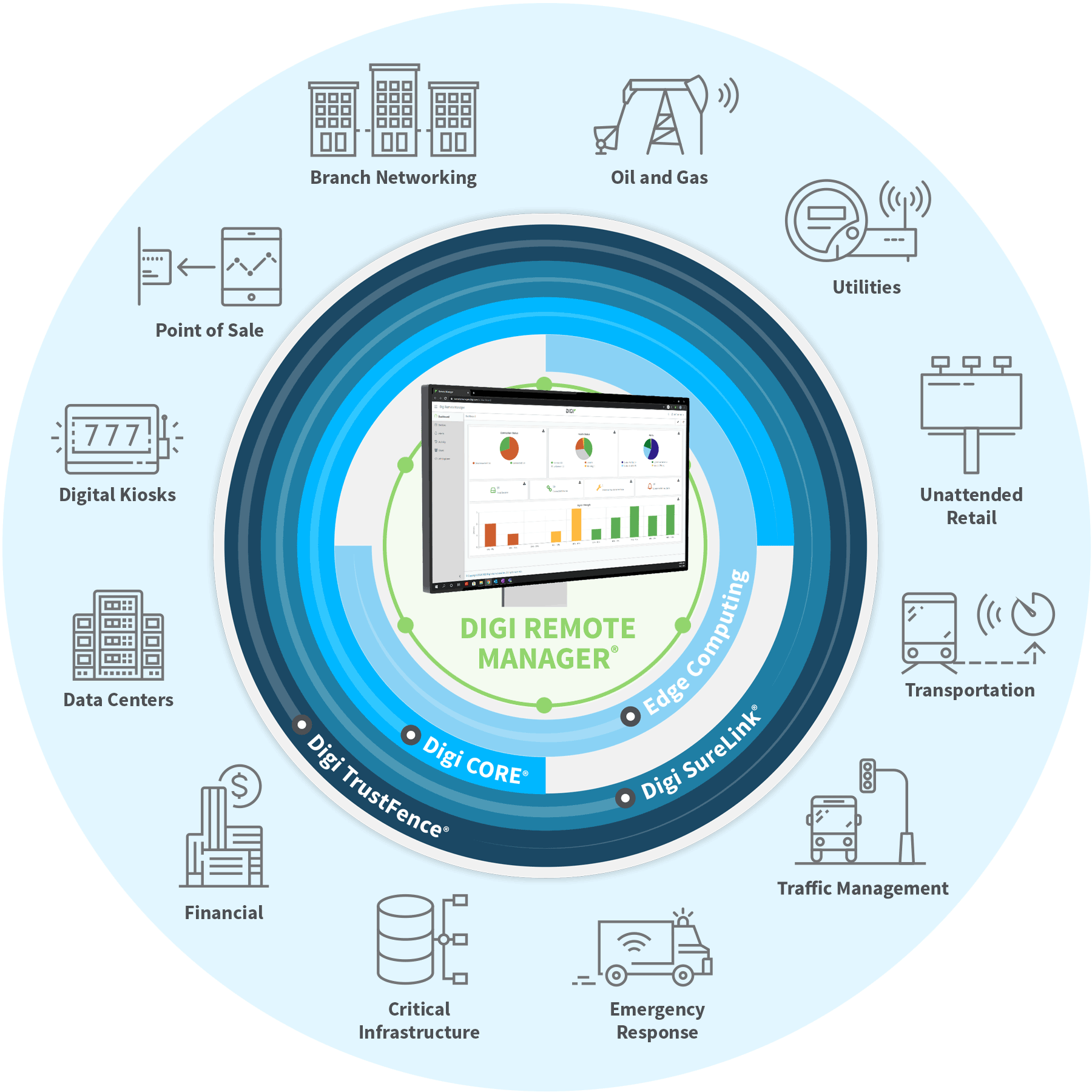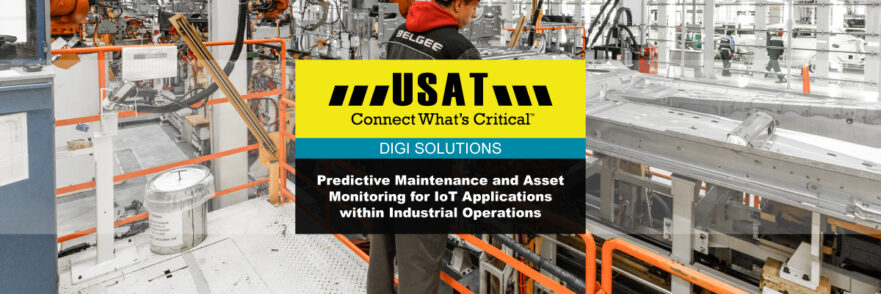Various complex environments rely on secure, sturdy, and cost-efficient IoT connectivity to monitor the whereabouts and status of valuable equipment and prevent business downtime caused by equipment failures. Examples include mining operations, wind and solar farms, construction sites, and manufacturing facilities. By combining IoT asset monitoring and predictive maintenance solutions, real-time insights and notifications are generated when equipment and other assets are on the move, malfunctioning, or displaying indications of imminent failure.
Together, USAT and Digi offer remote monitoring and management tools and connectivity solutions that integrate with business intelligence tools and cloud software to provide comprehensive asset monitoring, tracking, and maintenance solutions for industrial asset management and predictive maintenance use cases.
What Is Asset Monitoring?
How Does Asset Monitoring Work?
At the heart of asset monitoring are sensors that measure everything in the operating environment, from location and speed to vibrations or temperature. With IoT connectivity, sensor data is processed and transmitted to a cloud solution or processed at the network edge wherever assets are deployed.
Remote teams worldwide then use the data to monitor equipment in real time. The sensors can also remotely send functionality, security, and firmware updates to equipment without disrupting normal operations.
Why Do We Need Asset Monitoring?
For industries with complex machinery and systems as a part of their infrastructure, IoT asset monitoring can play a huge part in reducing unplanned downtime and saving drastic amounts of money since unplanned downtime can cost ten times more than planned downtime.
Similarly, the wind energy industry also benefits significantly from IoT asset monitoring. Wind capacity has increased by 53% from 2020 to 2021, according to the Global Wind Energy Council Global Wind Report 2021. With unscheduled downtime accounting for over 60% of maintenance and operation costs industry-wide, asset monitoring of complex systems is essential.
Eaton, a power management company, offers solutions for safely, sustainably, and efficiently managing electrical, mechanical, and hydraulic power. When they required a proprietary monitoring system to predict hydraulic hose failure, they contacted Digi to design it. By proactively monitoring the hydraulic hoses on various assets, Eaton has avoided expensive unscheduled maintenance and repairs while increasing their visibility into customers' machine assets.
What Is "Asset Tracking"?
Implementing asset tracking systems allows companies to track high-value equipment - including who's using it and how it's being handled - in real time. Industries that manage vast quantities of equipment, such as construction and farming operations, can particularly benefit from these solutions.
By utilizing IoT-enabled asset tracking, businesses can improve their supply chain performance. They can keep track of the location and condition of assets and inventory, enabling them to receive real-time updates to prevent equipment failures, asset loss, or improper handling. This streamlines the overall process, allowing businesses to operate more efficiently and effectively.

Asset Tracking Uses
Regardless of their location, asset tracking and monitoring enables the management of company equipment and assets. Some use cases include:
- More accurate IoT asset tracking and monitoring by integrating GPS into products, equipment, and transportation
- Improving transportation route efficiency, production line, and distribution processes
- Identifying supply chain data and patterns that can enhance predictive maintenance
- Using IoT connectivity and management software to perform critical monitoring for mission-critical assets
What Is the Difference Between Asset Tracking and Asset Management?
What Is the Best Way to Monitor Assets?
Several technologies - such as IT asset management for enterprises, asset monitoring and control in the healthcare industry, and remote asset monitoring in industrial applications- have been developed to help support key business objectives. These include:
- Radio Frequency Identification (RFID) – Tags that store and communicate information about an object or inventory, including location information
- Global Positioning System (GPS) – Devices that transmit through cellular networks or satellites and can be integrated into equipment and tracked through software
- Barcode – A label that is physically attached to an object and scanned with a mobile device
- Bluetooth Low Energy (BLE) – A short-range wireless technology that can exchange data with nearby devices
- Near Field Communication (NFC) – Two-way communication capability commonly used in mobile wallets and other contactless payment systems
IoT Asset Monitoring Benefits
Sending trucks to identify problems or monitor assets can be expensive, time-consuming, and hazardous to workers. Smart asset monitoring and remote inspections - enabled by the IoT - can replace or reduce on-site visits.
- IoT sensors can be used for predictive maintenance purposes and can measure almost any aspect of the system
- Continuous monitoring reduced unplanned downtime and increases system reliability
- The costs associated with unplanned failures are reduced with asset monitoring

What Is Predictive Maintenance?
In IoT asset monitoring, predictive maintenance plays a crucial role. Essentially, this involves a system that is comprised of sensors and intelligent edge devices that coordinate to detect anomalies and predict potential system failures before they occur.
When failures are identified, the system alerts operators so that preventive maintenance can be carried out by service personnel. By proactively identifying and addressing potential issues, predictive maintenance can help minimize downtime and reduce maintenance costs.
How Does Predictive Maintenance Work?
Predictive maintenance technology is designed to monitor the status and performance of equipment in real time. It analyzes sensor data and compares it to normal operational data to identify potential problems in advance. This helps operators schedule maintenance around production schedules to avoid disruptions to normal operations and can result in improved maintenance practices, reduced costs, and enhanced customer satisfaction.
Traditional methods of maintenance can be expensive, as human error means that operators may miss clues that equipment is malfunctioning, and manual equipment checks often require multiple trips to remote sites. However, predictive maintenance solutions use sensors to continuously monitor and detect irregularities all day, every day. When a problem is detected, the system sends an alert, allowing repair teams to troubleshoot and fix the issue before the end user is affected. This saves time, money and improves overall efficiency and customer satisfaction.
What Are Examples of Predictive Maintenance?
Wind and solar energy are critical components of the renewable energy landscape, and in the summer of 2022, the US achieved a major milestone by generating 20% of its power from these sources. As the world shifts toward renewable energy, the availability and reliability of wind and solar power become increasingly important as their contribution to the power grid grows.
Unplanned equipment failures can lead to production outages, resulting in lost energy and potentially causing blackouts during peak demand. Predictive maintenance solutions can help prevent these issues by detecting potential problems in advance, allowing maintenance teams to address them before they lead to significant downtime or power outages. This is especially important as climate change makes summers longer and hotter.
In addition to preventing downtime and outages, predictive maintenance can help reduce costs. According to research from the US Department of Energy, a predictive maintenance solution can generate up to 40% savings compared to reactive maintenance.
Another example of predictive maintenance is Otis Elevator, which operates more than 2.1 million elevators worldwide and transports one billion people daily. The solution remotely detects issues and sends data to the cloud, distributing it to customers and over 30,000 field technicians. The field technicians can then conduct maintenance - either remotely or on-site - that prevents elevator service disruptions and maintains customer satisfaction.
Other Predictive Maintenance Examples
- Manufacturing – Predictive maintenance in manufacturing and supply chain applications, powered by IoT connectivity, improves quality, uptime, and worker safety
- Railway sector – Predictive maintenance detects problems with assets and track irregularities
- Oil and gas industry – Facilities that are not easily accessible, especially in remote, offshore, and deep-water locations, are able to be monitored and maintained
- Mining operations – Unexpected conveyer belt failure can be avoided and can save millions of dollars
What Is the Difference Between Preventative and Predictive Maintenance?
Preventative and predictive maintenance are proactive approaches to equipment maintenance, but there are distinct differences.
Preventative maintenance involves regularly scheduled maintenance performed on equipment at set intervals. This type of maintenance is typically based on the equipment's expected lifespan, with maintenance scheduled based on either time or usage.
Predictive maintenance utilizes condition monitoring to predict equipment failure before it occurs, allowing maintenance to be scheduled before a failure happens. Rather than relying on a set schedule, this method uses real-time data analysis to detect changes in equipment conditions that may indicate a potential failure. By detecting and addressing issues early, predictive maintenance can help prevent more costly failures down the line.
By combining scheduled maintenance and real-time condition monitoring, maintenance teams can optimize their maintenance activities, reducing costs and maximizing equipment uptime.

What Is the Next Step to Implementing IoT Asset Monitoring and Predictive Maintenance?
IoT asset monitoring and predictive maintenance solutions can help your organization to create better customer experiences, reduce unplanned maintenance costs, or obtain better insights into your equipment location and usage.
The right technology partner can help predictive maintenance and asset monitoring solutions seamlessly integrate into your operations while significantly reducing the time to impact and investment required.
How USAT and Digi Can Help
If you're looking to deploy asset management and predictive maintenance applications globally, USAT and Digi's secure connectivity and remote monitoring tools can help you achieve this. With Digi's solutions, organizations will have complete visibility and control at their fingertips and gain insights into their assets and equipment location and usage. Digi provides a full suite of equipment, devices, and remote management tools suitable for any industry. Digi's solutions also readily integrate with business intelligence applications from asset-tracking IoT companies and system integrators.
Digi offers a range of solutions and services designed to help you deploy complete asset monitoring and preventative maintenance solutions for your operations. These include:

Digi Remote Manager
Digi Cellular Solutions
Digi's cellular routers and extenders offer enterprise and industrial connectivity for various connected applications, regardless of their location. These solutions cater to indoor and light industrial applications and transportation industry connectivity needs, such as traffic management, public transit, and heavy rail applications.
Digi's cellular routers are designed as fully integrated solutions that focus on supporting mission-critical needs. They offer rapid deployment, secure edge computing capabilities, and highly resilient connections. Additionally, these solutions are integrated with Digi RM for remote monitoring, firmware updates, functionality enhancements, and out-of-band management.
Digi Embedded Solutions
Digi's extensive offering of embedded solutions for developers and system integrators include:
- The Digi XBee® line of wireless modems with cellular LTE or RF connectivity in a range of protocols include, DigiMesh® and Zigbee® mesh.
- Digi solutions using LoRaWAN® for extended range connectivity.
- Digi ConnectCore® sytem-on-modules offering scalable programmability for a variety of applications
Serial Connectivity and Infrastructure Management
Digi offers a wide range of connectivity solutions for IT asset management, as well as connectivity and management of remote devices with a wide range of protocols. Digi AnywhereUSB Plus, and similar USB connectivity solutions, provide scalable, flexible, and secure connectivity for handheld assets and peripherals on a Local Area Network (LAN) via Ethernet or via Wi-Fi.
Digi's infrastructure management solutions - like the Digi Connect EZ family - include serial device servers that support management and secure access for critical equipment, servers, and network devices.
About USAT
For over 25 years, USAT has provided cellular communications solutions for various utility applications across the USA. With our extensive catalog of world-class routers, gateways, and software designed for remote monitoring and management in even the harshest environments — you can count on us to get and keep you connected.
Our connectivity solutions translate to less manual equipment maintenance, reduced downtime, and an overall increase in your business's ROI. Contact the experts at USAT to learn how our wireless networking solutions can help meet your organization's exacting needs.
Share this Post














